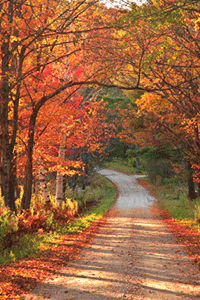 We are getting closer to that time of year again when ragweed and other pesky irritants water our eyes, clog our noses and make our lungs expel. Fall is just around the corner and with a few helpful hints you just may be able to reduce your symptoms.
We are getting closer to that time of year again when ragweed and other pesky irritants water our eyes, clog our noses and make our lungs expel. Fall is just around the corner and with a few helpful hints you just may be able to reduce your symptoms.
Although there are many different types of allergic responses such as food and dust, the type of allergens I would like to focus on in this article are outdoor seasonal allergies. Allergies are diseases of the immune system that are caused by an overreaction to substances called “allergens”. Although there are endless possible offenders, in our neck of the woods ragweed and mold are primary irritants. As the leaves fall from the trees and dry mold spores are released into the atmosphere, we inhale them. When we are allergic, our bodies go into attack mode, releasing histamines, causing the typical reactions such as coughing, watery eyes, fatigue, runny nose and headaches. As the wind blows across the ragweed, it also releases ragweed into the atmosphere and it is also inhaled. This causes reactivity in our lungs and nasal mucosa. Consider a few of the following preventative options to make your fall less irritating and more enjoyable.
TAKE A SHOWER
As we go through our day ,we are exposed to significant amounts of allergens that find their way into our hair and on our skin. When we get in bed, those allergens end up on our pillow as they fall out of our hair and come off our skin. We then end up being exposed all night long even though we are safe in our bed. By simply taking a shower or rinsing before we get in bed we can significantly reduce our exposure.
BE IN TOUCH
Knowing what is blooming and what the pollen counts are help you to make good decisions about when to be outside and when to minimize your exposure. Weather.com has a section that is devoted to giving you information about what the pollen counts are in your area as well as what allergens are present. If the pollen counts are high, it’s probably not the best choice to go for a bike ride or exercise outside. Save it for a lower pollen day and minimize your exposure.
DOORS AND WINDOWS
When the weather is cool , we are so tempted to open the windows and doors and air out the house. Unfortunately, instead of airing it out, we are inviting the pollen in. The pollen settles on our furniture, clothes, and kitchen countertops, which creates multiple opportunities for ingesting or inhaling. Therefore, as tempting as it is, keep the doors and windows shut during heavy pollen seasons.
VACUUM FREQUENTLY
Although cleaning can sometimes trigger allergic reactions, with the amount of allergens that are brought in on our shoes, flow through house vents or enter when we come home, we can significantly reduce our exposure by vacuuming at least two times a week. Consider wearing a mask when vacuuming to reduce your exposure. It is also very helpful to leave your house for a little while to let whatever is floating in the air settle and reduce the amount you inhale.
WASHING YOUR HANDS
We always hear about the value of washing our hands, and when it comes to allergies, washing your hands frequently will significantly diminish your exposure to allergens when you are tempted to rub your eyes, touch your nose and yes, put your fingers in your mouth.
BACK TO SCHOOL
As the kids head back to school and into the petri dish, exposure to erasers being clapped, playing on the playground at recess and dragging their sweatshirts and sweaters around all pose a problem and increase their chance of reactivity. Helping them understand how important it is to wash their hands and face after being outside will significantly reduce their exposure and symptoms.
